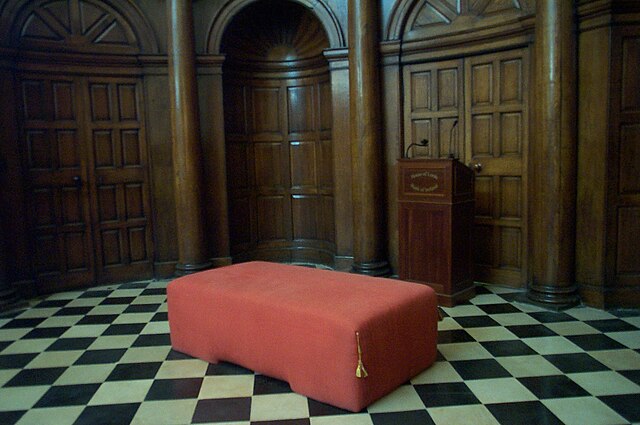The Irish House of Commons was the lower house of the Parliament of Ireland that existed from 1297 until the end of 1800. The upper house was the House of Lords. The membership of the House of Commons was directly elected, but on a highly restrictive franchise, similar to the unreformed House of Commons in contemporary Great Britain. Catholics were disqualified from sitting in the Irish parliament from 1691, even though they comprised the vast majority of the Irish population.
Irish House of Commons
Drawing of the front of the Irish Parliament House with the dome, seen from the street-level, in the 18th century
Engraving of section of the Irish House of Commons chamber by Peter Mazell based on the drawing by Rowland Omer 1767
Henry Boyle, speaker between 1733 and 1756
The Parliament of Ireland was the legislature of the Lordship of Ireland, and later the Kingdom of Ireland, from 1297 until the end of 1800. It was modelled on the Parliament of England and from 1537 comprised two chambers: the House of Commons and the House of Lords. The Lords were members of the Irish peerage and bishops. The Commons was directly elected, albeit on a very restricted franchise. Parliaments met at various places in Leinster and Munster, but latterly always in Dublin: in Christ Church Cathedral, Dublin Castle, Chichester House (1661–1727), the Blue Coat School (1729–31), and finally a purpose-built Parliament House on College Green.
Parliament of Ireland
The House of Commons in session (by Henry Barraud, John Hayter)
The House of Commons in session (by Francis Wheatley, 1780)
The Woolsack in the chamber of the House of Lords






